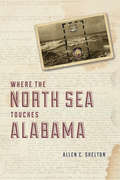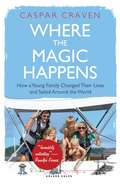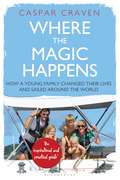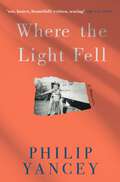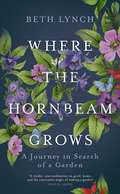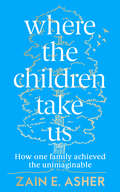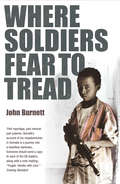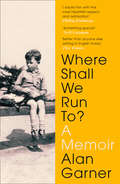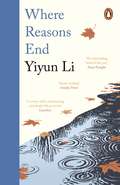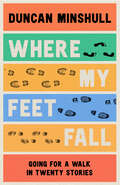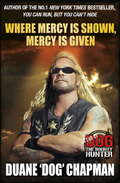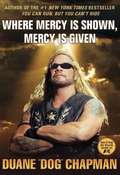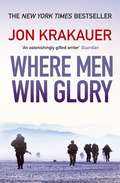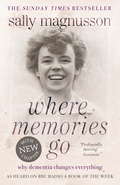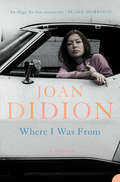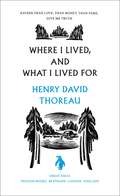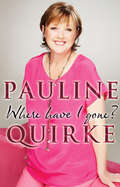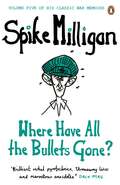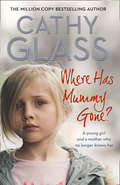- Table View
- List View
Where the North Sea Touches Alabama
by Allen C. SheltonOn a warm summer’s night in Athens, Georgia, Patrik Keim stuck a pistol into his mouth and pulled the trigger. Keim was an artist, and the room in which he died was an assemblage of the tools of his particular trade: the floor and table were covered with images, while a pair of large scissors, glue, electrical tape, and some dentures shared space with a pile of old medical journals, butcher knives, and various other small objects. Keim had cleared a space on the floor, and the wall directly behind him was bare. His body completed the tableau. Art and artists often end in tragedy and obscurity, but Keim’s story doesn’t end with his death. A few years later, 180 miles away from Keim’s grave, a bulldozer operator uncovered a pine coffin in an old beaver swamp down the road from Allen C. Shelton’s farm. He quickly reburied it, but Shelton, a friend of Keim’s who had a suitcase of his unfinished projects, became convinced that his friend wasn’t dead and fixed in the ground, but moving between this world and the next in a traveling coffin in search of his incomplete work. In Where the North Sea Touches Alabama, Shelton ushers us into realms of fantasy, revelation, and reflection, paced with a slow unfurling of magical correspondences. Though he is trained as a sociologist, this is a genre-crossing work of literature, a two-sided ethnography: one from the world of the living and the other from the world of the dead. What follows isn’t a ghost story but an exciting and extraordinary kind of narrative. The psycho-sociological landscape that Shelton constructs for his reader is as evocative of Kafka, Bataille, and Benjamin as it is of Weber, Foucault, and Marx. Where the North Sea Touches Alabama is a work of sociological fictocriticism that explores not only the author’s relationship to the artist but his physical, historical, and social relationship to northeastern Alabama, in rare style.
Where the North Sea Touches Alabama
by Allen C. SheltonOn a warm summer’s night in Athens, Georgia, Patrik Keim stuck a pistol into his mouth and pulled the trigger. Keim was an artist, and the room in which he died was an assemblage of the tools of his particular trade: the floor and table were covered with images, while a pair of large scissors, glue, electrical tape, and some dentures shared space with a pile of old medical journals, butcher knives, and various other small objects. Keim had cleared a space on the floor, and the wall directly behind him was bare. His body completed the tableau. Art and artists often end in tragedy and obscurity, but Keim’s story doesn’t end with his death. A few years later, 180 miles away from Keim’s grave, a bulldozer operator uncovered a pine coffin in an old beaver swamp down the road from Allen C. Shelton’s farm. He quickly reburied it, but Shelton, a friend of Keim’s who had a suitcase of his unfinished projects, became convinced that his friend wasn’t dead and fixed in the ground, but moving between this world and the next in a traveling coffin in search of his incomplete work. In Where the North Sea Touches Alabama, Shelton ushers us into realms of fantasy, revelation, and reflection, paced with a slow unfurling of magical correspondences. Though he is trained as a sociologist, this is a genre-crossing work of literature, a two-sided ethnography: one from the world of the living and the other from the world of the dead. What follows isn’t a ghost story but an exciting and extraordinary kind of narrative. The psycho-sociological landscape that Shelton constructs for his reader is as evocative of Kafka, Bataille, and Benjamin as it is of Weber, Foucault, and Marx. Where the North Sea Touches Alabama is a work of sociological fictocriticism that explores not only the author’s relationship to the artist but his physical, historical, and social relationship to northeastern Alabama, in rare style.
Where the North Sea Touches Alabama
by Allen C. SheltonOn a warm summer’s night in Athens, Georgia, Patrik Keim stuck a pistol into his mouth and pulled the trigger. Keim was an artist, and the room in which he died was an assemblage of the tools of his particular trade: the floor and table were covered with images, while a pair of large scissors, glue, electrical tape, and some dentures shared space with a pile of old medical journals, butcher knives, and various other small objects. Keim had cleared a space on the floor, and the wall directly behind him was bare. His body completed the tableau. Art and artists often end in tragedy and obscurity, but Keim’s story doesn’t end with his death. A few years later, 180 miles away from Keim’s grave, a bulldozer operator uncovered a pine coffin in an old beaver swamp down the road from Allen C. Shelton’s farm. He quickly reburied it, but Shelton, a friend of Keim’s who had a suitcase of his unfinished projects, became convinced that his friend wasn’t dead and fixed in the ground, but moving between this world and the next in a traveling coffin in search of his incomplete work. In Where the North Sea Touches Alabama, Shelton ushers us into realms of fantasy, revelation, and reflection, paced with a slow unfurling of magical correspondences. Though he is trained as a sociologist, this is a genre-crossing work of literature, a two-sided ethnography: one from the world of the living and the other from the world of the dead. What follows isn’t a ghost story but an exciting and extraordinary kind of narrative. The psycho-sociological landscape that Shelton constructs for his reader is as evocative of Kafka, Bataille, and Benjamin as it is of Weber, Foucault, and Marx. Where the North Sea Touches Alabama is a work of sociological fictocriticism that explores not only the author’s relationship to the artist but his physical, historical, and social relationship to northeastern Alabama, in rare style.
Where the North Sea Touches Alabama
by Allen C. SheltonOn a warm summer’s night in Athens, Georgia, Patrik Keim stuck a pistol into his mouth and pulled the trigger. Keim was an artist, and the room in which he died was an assemblage of the tools of his particular trade: the floor and table were covered with images, while a pair of large scissors, glue, electrical tape, and some dentures shared space with a pile of old medical journals, butcher knives, and various other small objects. Keim had cleared a space on the floor, and the wall directly behind him was bare. His body completed the tableau. Art and artists often end in tragedy and obscurity, but Keim’s story doesn’t end with his death. A few years later, 180 miles away from Keim’s grave, a bulldozer operator uncovered a pine coffin in an old beaver swamp down the road from Allen C. Shelton’s farm. He quickly reburied it, but Shelton, a friend of Keim’s who had a suitcase of his unfinished projects, became convinced that his friend wasn’t dead and fixed in the ground, but moving between this world and the next in a traveling coffin in search of his incomplete work. In Where the North Sea Touches Alabama, Shelton ushers us into realms of fantasy, revelation, and reflection, paced with a slow unfurling of magical correspondences. Though he is trained as a sociologist, this is a genre-crossing work of literature, a two-sided ethnography: one from the world of the living and the other from the world of the dead. What follows isn’t a ghost story but an exciting and extraordinary kind of narrative. The psycho-sociological landscape that Shelton constructs for his reader is as evocative of Kafka, Bataille, and Benjamin as it is of Weber, Foucault, and Marx. Where the North Sea Touches Alabama is a work of sociological fictocriticism that explores not only the author’s relationship to the artist but his physical, historical, and social relationship to northeastern Alabama, in rare style.
Where the North Sea Touches Alabama
by Allen C. SheltonOn a warm summer’s night in Athens, Georgia, Patrik Keim stuck a pistol into his mouth and pulled the trigger. Keim was an artist, and the room in which he died was an assemblage of the tools of his particular trade: the floor and table were covered with images, while a pair of large scissors, glue, electrical tape, and some dentures shared space with a pile of old medical journals, butcher knives, and various other small objects. Keim had cleared a space on the floor, and the wall directly behind him was bare. His body completed the tableau. Art and artists often end in tragedy and obscurity, but Keim’s story doesn’t end with his death. A few years later, 180 miles away from Keim’s grave, a bulldozer operator uncovered a pine coffin in an old beaver swamp down the road from Allen C. Shelton’s farm. He quickly reburied it, but Shelton, a friend of Keim’s who had a suitcase of his unfinished projects, became convinced that his friend wasn’t dead and fixed in the ground, but moving between this world and the next in a traveling coffin in search of his incomplete work. In Where the North Sea Touches Alabama, Shelton ushers us into realms of fantasy, revelation, and reflection, paced with a slow unfurling of magical correspondences. Though he is trained as a sociologist, this is a genre-crossing work of literature, a two-sided ethnography: one from the world of the living and the other from the world of the dead. What follows isn’t a ghost story but an exciting and extraordinary kind of narrative. The psycho-sociological landscape that Shelton constructs for his reader is as evocative of Kafka, Bataille, and Benjamin as it is of Weber, Foucault, and Marx. Where the North Sea Touches Alabama is a work of sociological fictocriticism that explores not only the author’s relationship to the artist but his physical, historical, and social relationship to northeastern Alabama, in rare style.
Where the North Sea Touches Alabama
by Allen C. SheltonOn a warm summer’s night in Athens, Georgia, Patrik Keim stuck a pistol into his mouth and pulled the trigger. Keim was an artist, and the room in which he died was an assemblage of the tools of his particular trade: the floor and table were covered with images, while a pair of large scissors, glue, electrical tape, and some dentures shared space with a pile of old medical journals, butcher knives, and various other small objects. Keim had cleared a space on the floor, and the wall directly behind him was bare. His body completed the tableau. Art and artists often end in tragedy and obscurity, but Keim’s story doesn’t end with his death. A few years later, 180 miles away from Keim’s grave, a bulldozer operator uncovered a pine coffin in an old beaver swamp down the road from Allen C. Shelton’s farm. He quickly reburied it, but Shelton, a friend of Keim’s who had a suitcase of his unfinished projects, became convinced that his friend wasn’t dead and fixed in the ground, but moving between this world and the next in a traveling coffin in search of his incomplete work. In Where the North Sea Touches Alabama, Shelton ushers us into realms of fantasy, revelation, and reflection, paced with a slow unfurling of magical correspondences. Though he is trained as a sociologist, this is a genre-crossing work of literature, a two-sided ethnography: one from the world of the living and the other from the world of the dead. What follows isn’t a ghost story but an exciting and extraordinary kind of narrative. The psycho-sociological landscape that Shelton constructs for his reader is as evocative of Kafka, Bataille, and Benjamin as it is of Weber, Foucault, and Marx. Where the North Sea Touches Alabama is a work of sociological fictocriticism that explores not only the author’s relationship to the artist but his physical, historical, and social relationship to northeastern Alabama, in rare style.
Where the Magic Happens: How a Young Family Changed Their Lives and Sailed Around the World
by Caspar Craven Ranulph FiennesIn June 2009, Caspar and Nichola created a plan to sail around the world with their young children. Most people thought they were crazy. But over the past seven years they've embraced every moment of this momentous chapter of their lives. Five years of planning – the vision, the values, the practicalities, the realities, the excitement, the highs, the lows and the seemingly adventure-stopping obstacles – led to two wonderful years of living their dream – the magical and the scary; enjoying life and learning as a family.This is Caspar's story. It's a story of a fabulous sailing adventure but it's also so much more than that – it's an inspirational tale for all those wishing they could do the same; it's a practical guide to show you just how you can make it happen; it's a motivational story of leadership and teamwork within a family; and it's a funny, heart-warming tale of slightly unconventional family life. The fascinating narrative of Caspar's story is accompanied by useful text features such as tip boxes, sidebars and chapter summaries, so that the reader can easily extrapolate the necessary nuggets about how they can make the dream a reality.
Where the Magic Happens: How a Young Family Changed Their Lives and Sailed Around the World
by Caspar Craven Sir Ranulph FiennesIn June 2009, Caspar and Nichola created a plan to sail around the world with their young children. Most people thought they were crazy. But over the past seven years they've embraced every moment of this momentous chapter of their lives. Five years of planning – the vision, the values, the practicalities, the realities, the excitement, the highs, the lows and the seemingly adventure-stopping obstacles – led to two wonderful years of living their dream – the magical and the scary; enjoying life and learning as a family.This is Caspar's story. It's a story of a fabulous sailing adventure but it's also so much more than that – it's an inspirational tale for all those wishing they could do the same; it's a practical guide to show you just how you can make it happen; it's a motivational story of leadership and teamwork within a family; and it's a funny, heart-warming tale of slightly unconventional family life. The fascinating narrative of Caspar's story is accompanied by useful text features such as tip boxes, sidebars and chapter summaries, so that the reader can easily extrapolate the necessary nuggets about how they can make the dream a reality.
Where the Light Fell: A Memoir
by Philip Yancey'Not until college days do I discover the shocking secret of my father's death.'With a journalist's background Philip Yancey is widely admired for taking on the more difficult and confusing aspects of faith. Now in Where the Light Fell he shares, for the first time, the painful details of his own origins - taking us on an evocative journey from the backwoods and Bible-belt pockets of the South to the bustling streets of Philadelphia; from trailer parks to church parking lots; from dark secrets and family oddballs to fire-and-brimstone preachers and interminable church services. Raised by their impoverished single mother, Philip and his brother Marshall struggle to comprehend her speeches about their dead father, an Old Testament Bible story, and sons sacrificed for a divine cause.This coming-of-age story is a slice of life, both intensely personal and broadly resonant, set against a turbulent time in post-WWII American history shaped by the racism and paranoia of fundamentalist Christianity and reshaped by the mounting pressures of the Civil Rights movement and 60s-era forces of social change. An unforgettable read, it is at once hugely funny, deeply disturbing and achingly poignant. A testament to the power of the human spirit, Where the Light Fell illuminates Yancey's ability to bring comfort to those bruised by the church, and hope to those who can't imagine ever finding a healthy faith.
Where the Hornbeam Grows: A Journey in Search of a Garden
by Beth LynchWhat do you do when you find yourself living as a stranger? When Beth Lynch moved to Switzerland, she quickly realised that the sheer will to connect with people would not guarantee a happy relocation.Out of place and lonely, Beth knows that she needs to get her hands dirty if she is to put down roots. And so she sets about making herself at home in the way she knows best - by tending a garden, growing things. The search for a garden takes her across the country, through meadows and on mountain paths where familiar garden plants run wild, to the rugged hills of the Swiss Jura. In this remote and unfamiliar place of glow worms and dormice and singing toads she learns to garden in a new way, taking her cue from the natural world. As she plants her paradise with hellebores and aquilegias, cornflowers and Japanese anemones, these cherished species forge green and deepening connections: to her new soil, to her old life in England, and to her deceased parents, whose Sussex garden continues to flourish in her heart. WHERE THE HORNBEAM GROWS is a memoir about carrying a garden inwardly through loss, dislocation and relocation, about finding a sense of wellbeing in a green place of your own, and about the limits of paradise in a peopled world. It is a powerful exploration by a dazzling new literary voice of how, in nurturing a corner of the natural world, we ourselves are nurtured.
Where the Children Take Us: How One Family Achieved The Unimaginable
by Zain E. AsherIn this spellbinding memoir, popular CNN anchor Zain Asher pays tribute to her mother’s strength and determination to raise four successful children in the shadow of tragedy.
Where Soldiers Fear To Tread: At Work in the Fields of Anarchy
by John BurnettIn 1998, on the lookout for adventure and willing to take a risk, John Burnett left the comforts of the mainstream and became a UN relief worker in Somalia. He was completely unprepared for the realities of working in a country without government or law, where the only authority comes from a loaded gun. Held at gunpoint by a child soldier, having to watching a baby die of malaria in his arms, the experience profoundly changed the way he saw the world.
Where Shall We Run To?: A Memoir
by Alan GarnerA NEW STATESMAN BOOK OF THE YEAR From one of our greatest living writers, comes a remarkable memoir of a forgotten England.
Where Reasons End: A Novel
by Yiyun Li'Profoundly moving. An astonishing book, a true work of art' Max Porter, author of Grief is the Thing with Feathers 'Heart-wrenching, fearless, and unlike anything you've ever read' Esquire'I sit here shaken and, I think, changed by this work' Katherine Boo, author of Behind the Beautiful Forevers'A devastating read, but also a tender one, filled with love, complexity, and a desire for understanding' Nylon'The most intelligent, insightful, heart-wrenching book of our time' Sean Andrew Greer, Pulitzer Prize-winning author of Less'Captures the affections and complexity of parenthood in a way that has never been portrayed before' The Millions'Ethereal and electric, radiating unthinkable pain and profound love' BuzzfeedFrom the critically acclaimed author of The Vagrants, a devastating and utterly original novel on grief and motherhood'Days: the easiest possession. The days he had refused would come, one at a time. They would wait, every daybreak, with their boundless patience and indifference, seeing if they could turn me into an ally or an enemy to myself.'A woman's teenage son takes his own life. It is incomprehensible. The woman is a writer, and so she attempts to comprehend her grief in the space she knows best: on the page, as an imagined conversation with the child she has lost. He is as sharp and funny and serious in death as he was in life itself, and he will speak back to her, unable to offer explanation or solace, but not yet, not quite, gone.Where Reasons End is an extraordinary portrait of parenthood, in all its painful contradictions of joy, humour and sorrow, and of what it is to lose a child.Praise for Yiyun Li:'A masterpiece...[Puts] you in mind of Tolstoy or Chekhov' Sunday Times on The Vagrants'This is a book of immense power and it will leave you reeling' New Statesman on The Vagrants'Controlled understatement, scrupulous and unsparing lucidity... A work of great moral poise and dignity.I have not read such a compelling work in years' Independent
Where Night Is Day: The World of the ICU (The Culture and Politics of Health Care Work)
by James Kelly"There is no night in the ICU. There is day, lesser day, then day again. There are rhythms. Every twelve hours: shift change. Report: first all together in the big room, then at the bedside, nurse to nurse. Morning rounds. A group of doctors moves slowly through the unit like a harrow through a field. At each room, like a game, a different one rotates into the center. They leave behind a trail of new orders. Wean, extubate, titrate, start this, stop that, scan, film, scope. The steep hill the patient is asked to climb. Can you breathe on your own? Can you wake up? Can you live?"—Where Night Is DayWhere Night Is Day is a nonfiction narrative grounded in the day-by-day, hour-by-hour rhythms of an ICU in a teaching hospital in the heart of New Mexico. It takes place over a thirteen-week period, the time of the average rotation of residents through the ICU. It begins in September and ends at Christmas. It is the story of patients and families, suddenly faced with critical illness, who find themselves in the ICU. It describes how they navigate through it and find their way. James Kelly is a sensitive witness to the quiet courage and resourcefulness of ordinary people. Kelly leads the reader into a parallel world: the world of illness. This world, invisible but not hidden, not articulated by but known by the ill, does not readily offer itself to our understanding. In this context, Kelly reflects on the nature of medicine and nursing, on how doctors and nurses see themselves and how they see each other. Drawing on the words of medical historians, doctor-writers, and nursing scholars, Kelly examines the relationship of professional and lay observers to the meaning of illness, empathy, caring, and the silence of suffering. Kelly offers up an intimate portrait of the ICU and its inhabitants.
Where My Feet Fall: Going For A Walk In Twenty Stories
by Duncan MinshullWhere can a walk take you?
Where Mercy is Shown, Mercy is Given: Star of Dog the Bounty Hunter
by Duane ChapmanIn Dog We Trust. More tales from the world's most famous bounty hunter.'This is your wake up call. You either answer it now, or pay for it for the rest of your life. The choice is yours.'Duane 'Dog' Chapman is the world's most famous bounty hunter. During his hard-hitting and often controversial career, he has rounded up more than 6,000 criminals, and inspired and entertained millions on his top-rated TV show, DOG THE BOUNTY HUNTER. But his job doesn't end when the cuffs go on...Having been on the wrong side of the law himself - abuse, addiction, crime, gangs, prison - and turned his life around to become an American icon, Dog knows how to get fugitives back on the straight and narrow. And he makes it his business to help.This is an action-packed account of life on the front line, bringing dangerous criminals to justice. It is also the incredible story of a man who has struggled with his own flaws and made the transition from hell-raiser to peacekeeper.
Where Mercy Is Shown, Mercy Is Given
by Duane Dog ChapmanThe incredible story of struggle, redemption, and bounty hunting -- which has catapulted Duane "Dog" Chapman into the hearts of millions, sparked a #1 rated television show, and inspired a #1 New York Times bestselling book -- continues in Where Mercy Is Shown, Mercy Is Given."Who is going to give them the ride, Duane Who will give them the cigarette and who will give them `the talk'"When the preacher posed those questions to me, I realized he was right. If not me, then who Whether I had planned it or not, I was leading a backseat ministry, one ride at a time. -- from Where Mercy Is Shown, Mercy Is Given Considered by many to be the world's greatest bounty hunter, Duane "Dog" Chapman has become famous for capturing fugitives on Dog the Bounty Hunter, his #1 rated show on A&E. But his job doesn't end when he cuffs his man -- or woman. Having personally struggled against abuse, addition, and a life of crime, Dog knows a thing or two about the path that these fugitives cuffed in the back of his car are on -- and he has a good idea of the bad news they'll find at the end of it. As someone who has succeeded in beating the odds and finding a way to live on the right side of the law, Dog also knows what the person in the backseat needs to hear in order to straighten out his or her life. "This is your wake up call. You either answer it now, or pay for it later and for the rest of your life. You're being given another shot at things, but only if you take the risk to make the right decision. The choice is yours. What's it going to be, brotha" While he is himself a mentor to many, Dog draws strength from the great teachers in his own life to face the surprising and difficult challenges that have come his way. Through hard work, unflinching faith, and the acknowledgment of his own flaws -- along with the overwhelming desire to fix those flaws -- Dog has been through the fire again and again, and come out the stronger for it. Revealing, behind-the-scenes looks at Dog's most significant challenges, along with seat-of-your-pants accounts of his most breakneck bounty hunting stories, makes Where Mercy Is Shown, Mercy Is Given a must-read for any fan.
Where Men Win Glory: The Odyssey of Pat Tillman
by Jon KrakauerPat Tillman was well-known to American sports fans: a chisel-jawed and talented young professional football star, he was on the brink of signing a million dollar contract when, in 2001, al-Qaeda launched terrorist attacks against his country. Driven by deeply felt moral patriotism, he walked away from fame and money to enlist in the United States Special Operations Forces. A year later he was killed - apparently in the line of fire - on a desolate hillside near the Pakistan border in Afghanistan. News of Tillman's death shocked America. But even as the public mourned his loss, the US Army aggressively maneuvered to conceal the truth: that it was a ranger in Tillman's own platoon who had fired the fatal shots. In Where Men Win Glory, Jon Krakauer reveals how an entire country was deliberately deceived by those at the very highest levels of the US army and government. Infused with the power and authenticity readers have come to expect from Krakauer's storytelling, Where Men Win Glory exposes shattering truths about men and war.
Where Memories Go: Why dementia changes everything - Now with a new chapter
by Sally Magnusson'A fine book' The Sunday Times 'Powerful' Guardian 'Wonderful' The Telegraph'Moving, funny, warm' Mail on Sunday'Brave, compassionate, tender and honest' Metro'This book began as an attempt to hold on to my witty, storytelling mother with the one thing I had to hand. Words. Then, as the enormity of the social crisis my family was part of began to dawn, I wrote with the thought that other forgotten lives might be nudged into the light along with hers. Dementia is one of the greatest social, medical, economic, scientific, philosophical and moral challenges of our times. I am a reporter. It became the biggest story of my life.' Sally MagnussonSad and funny, wise and honest, Where Memories Go is a deeply intimate account of insidious losses and unexpected joys in the terrible face of dementia, and a call to arms that challenges us all to think differently about how we care for our loved ones when they need us most.Regarded as one of the finest journalists of her generation, Mamie Baird Magnusson's whole life was a celebration of words - words that she fought to retain in the grip of a disease which is fast becoming the scourge of the 21st century. Married to writer and broadcaster Magnus Magnusson, they had five children of whom Sally is the eldest. As well as chronicling the anguish, the frustrations and the unexpected laughs and joys that she and her sisters experienced while accompanying their beloved mother on the long dementia road for eight years until her death in 2012, Sally Magnusson seeks understanding from a range of experts and asks penetrating questions about how we treat older people, how we can face one of the greatest social, medical, economic and moral challenges of our times, and what it means to be human.Facebook.com/WhereMemoriesGo
Where I Was From
by Joan DidionA memoir of land, family and perseverance from one of the most influential writers in America.
Where I Lived, and What I Lived For
by Henry ThoreauThroughout history, some books have changed the world. They have transformed the way we see ourselves - and each other. They have inspired debate, dissent, war and revolution. They have enlightened, outraged, provoked and comforted. They have enriched lives - and destroyed them. Now Penguin brings you the works of the great thinkers, pioneers, radicals and visionaries whose ideas shook civilization and helped make us who we are.Thoreau's account of his solitary and self-sufficient home in the New England woods remains an inspiration to the environmental movement - a call to his fellow men to abandon their striving, materialistic existences of 'quiet desperation' for a simple life within their means, finding spiritual truth through awareness of the sheer beauty of their surroundings.
Where Have I Gone?
by Pauline QuirkePauline Quirke was a skinny child, a slim teenager, a curvy woman, then - according to her bathroom scales (curse them) - just plain fat. Yes, the 'F' word. Tipping the scales at nearly 20 stone, with creaking knees and a dodgy ankle to boot, at the beginning of 2011 Pauline had reached a crisis point. Something had to change, and fast. It was never going to be an easy ride, but with her trademark warmth and sense of humour, Pauline recounts the highs and lows of the rollercoaster year in which she whips herself, and her life, into shape - with a fair few tales from her celebrated forty-year acting career thrown into the bargain. She reveals all: from the strain of working long hours away from home on one of Britain's most popular soaps to renewing her wedding vows and reuniting with her Birds of a Feather co-stars; from battling the bulge and facing the naysayers to rediscovering the joys of airline travel . . . without a seatbelt extension.Honest and revealing, Where Have I Gone? is brimming with brilliantly funny anecdotes and truly moving moments. So put your feet up and join Pauline as she embarks on the most incredible year of her life.
Where Have All the Bullets Gone? (Spike Milligan War Memoirs #5)
by Spike MilliganSpike Milligan's legendary war memoirs are a hilarious and subversive first-hand account of the Second World War, as well as a fascinating portrait of the formative years of this towering comic genius, most famous as writer and star of The Goon Show. They have sold over 4.5 million copies since they first appeared.'The most irreverent, hilarious book about the war that I have ever read' Sunday Express'Brilliant verbal pyrotechnics, throwaway lines and marvelous anecdotes' Daily Mail'Desperately funny, vivid, vulgar' Sunday TimesBack to those haunting days in Italy in 1944, at the foot of Mount Vesuvius, with lava running in great red rivulets down the slope towards us, and Jock taking a drag on his cigarette and saying, 'I think we've got grounds for a rent rebate.' The fifth volume of Spike Milligan's unsurpassed account of life as a Bombardier in World War Two sees our hero dispatched from the front line to psychiatric hospital and from there to a rehabilitation camp. Considered loony (and 'unfit to be killed in combat by either side'), he becomes embroiled in his own private battle with melancholy. But it is music, wit and a little help from his friends - including one Gunner Harry Secombe - that help carry him through to his first stage appearances ...'That absolutely glorious way of looking at things differently. A great man' Stephen Fry'Milligan is the Great God to all of us' John Cleese'The Godfather of Alternative Comedy' Eddie Izzard'Manifestly a genius, a comic surrealist genius and had no equal' Terry Wogan'A totally original comedy writer' Michael Palin'Close in stature to Lewis Carroll and Edward Lear in his command of the profound art of nonsense' GuardianSpike Milligan was one of the greatest and most influential comedians of the twentieth century. Born in India in 1918, he served in the Royal Artillery during WWII in North Africa and Italy. At the end of the war, he forged a career as a jazz musician, sketch-show writer and performer, before joining forces with Peter Sellers and Harry Secombe to form the legendary Goon Show. Until his death in 2002, he had success as on stage and screen and as the author of over eighty books of fiction, memoir, poetry, plays, cartoons and children's stories.
Where Has Mummy Gone?: When There Is Nothing Left But Memories...
by Cathy GlassThe true story of Melody, aged 8, the last of five siblings to be taken from her drug dependent single mother and brought into care.
